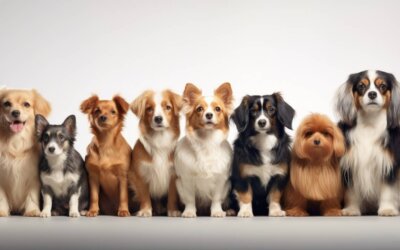A lush, green lawn is a sight to behold, but if you’re a dog owner, you’ve probably faced the frustrating problem of dog urine killing your grass. Those unsightly brown spots can be a real eyesore, but fear not!
In this article, we’ll delve into why dog urine damages the grass and provide practical solutions to protect your beloved lawn.
Why Does Dog Urine Kill Grass?
Due to nitrogen, urea, and lactic acid factors, dog urine can wreak havoc on your lawn. Dog urine contains substantial nitrogen, a vital nutrient for plant growth. However, when dogs urinate on your lawn, the concentrated nitrogen in their urine can overwhelm the grass and soil.
This excessive nitrogen load is akin to overfeeding your property, leading to browning and damage instead of lush greenery. Urea, another component of dog urine, also plays a significant role in grass damage.
Urea is a waste product produced when the body breaks down proteins. While it contains nitrogen, it can also release ammonia as it decomposes in the soil. Ammonia is highly alkaline, and its interaction with the earth can raise its pH level, making it more alkaline.
Lactic acid, found in varying amounts in dog urine, is another contributing factor. Lactic acid is a byproduct of muscle metabolism and can further increase soil alkalinity during the decomposition of urea.
This disruption in the soil’s delicate pH balance can hinder proper grass growth. The combined effects of nitrogen, urea, and lactic acid lead to the browning and damage observed in your lawn when your dog urinates on it.
Does Diet Affect Dog Urine Damage?
Your dog’s diet can significantly influence the extent of urine damage to your lawn. Here’s how diet comes into play:
Dietary Protein Content
A protein-rich diet can increase nitrogen levels in your dog’s urine. Nitrogen is a critical component of protein, and when your dog consumes excess protein, their body excretes it through urine. As a result, the urine becomes more concentrated with nitrogen, increasing its potential to harm your grass when it comes into contact with the soil.
Balanced Diet
Providing your dog with a well-balanced diet that meets their nutritional needs while avoiding excessive protein can help mitigate the damage caused by their urine.
Adjusting your dog’s diet to include a balance of protein sources can be a proactive step in protecting your lawn.

Does Gender Affect Dog Urine Damage?
Gender can indeed affect the extent of dog urine damage to your lawn.
Female Dogs
Female dogs typically tend to cause more concentrated damage to the grass.
Female dogs often urinate in one full spot, releasing more urine in a specific area. The focused urine can overwhelm the grass and soil, resulting in more noticeable browning and damage in that location.
Male Dogs
In contrast, male dogs usually distribute their urine over a larger area, often by lifting their leg to mark their territory. While the urine is spread out, it can still contain a significant amount of nitrogen, harming the grass. Because the urine is dispersed, the damage may be less concentrated and noticeable than in female dogs.
What Can You Do to Protect Your Lawn?
To protect your lawn from dog urine damage and maintain its lush green appearance, you can implement several strategies:
Dilute the Urine
One of the most effective ways to minimize urine damage is to immediately water the area where your dog has urinated. This helps dilute the nitrogen concentration in the soil and wash away some harmful elements.
Designate a Pee Area
Train your dog to urinate in a specific yard area. This can be achieved through positive reinforcement and rewards when they use the designated spot. By concentrating urine in one place, you can limit the damage to a single location.
Re-seed and Fertilized
For areas already damaged, you can re-seed the affected spots and apply a balanced fertilizer to promote grass regrowth. Be sure to follow the manufacturer’s instructions for proper application.
Use Urine-Resistant Ground Covers
In areas your dog frequents, you can replace grass with urine-resistant ground covers like clover or ornamental grasses. These options are more tolerant of urine and can be aesthetically pleasing.
By combining these strategies, you can effectively protect your lawn from dog urine damage and enjoy a vibrant, healthy yard while keeping your furry friend happy.

How to Neutralize Dog Urine on Grass?
To neutralize dog urine on your grass, promptly water the affected area to dilute the urine. Afterward, sprinkle baking soda over the spot to help counteract the acidity of the urine.
Allow the baking soda to sit overnight before thoroughly rinsing the area with water. Alternatively, consider using gypsum or specialized lawn repair products for this purpose.
These steps can help restore the soil’s pH balance and minimize the damage caused by dog urine. Training your dog to urinate in a designated area and maintaining proper lawn care practices can prevent future damage.
How to Train a Dog to Not Urinate on Grass
- Designated Spot Method:
- Create a specialized bathroom area with mulch, gravel, or cement.
- Use positive reinforcement and rewards to train your dog to use this spot.
- Prevent unsightly dead spots on your lawn with this targeted approach.
- Lead Your Dog to a Different Spot:
- Encourage increased water intake for diluted urine and neutralized nitrates.
- Guide your dog to various spots during urination to minimize lawn impact.
- Set Up a Designated Potty Spot:
- Establish a specific urination zone with products like a Pee Post emitting pheromones.
- Reinforce desired behavior with treats and praise to solidify the designated area.
- Water the Spot Right After Your Dog Goes:
- Deeply water the area immediately after urination to flush out urine from the soil.
- Proactively prevent grass damage by taking this post-urination measure.
- Train on Cement Method:
- Develop a cement bathroom area for your dog.
- Leash-walk your dog in the neighborhood, commanding it to pee only on cement surfaces.
- Create a positive association between urination and cement, steering clear of grass.
- Repair Brown Grass Spots After the Fact:
- Neutralize urine salts with gypsum-containing products for damaged areas.
- Aid soil restoration to prevent further harm to your lawn.
Training your dog to adjust its bathroom habits requires time and patience. Consistency and positive reinforcement can modify your dog’s behavior, ensuring a lush and healthy lawn.
Conclusion
While dog urine can be harsh on your lawn, understanding why it happens and taking proactive steps can help keep your grass green and vibrant. You can enjoy a beautiful yard and a happy, healthy pet by adjusting your dog’s diet, training them to urinate in a specific area, and neutralizing urine spots.

FAQs
Are certain grass types more resistant to urine damage?
Some grass varieties, like Kentucky bluegrass and ryegrass, are more resistant to urine damage than others. Consider planting these if you have a dog.
Is it safe for my dog to consume baking soda if they walk in a treated area?
Small amounts of baking soda are generally safe for dogs, but it’s best to prevent them from ingesting large quantities.
Can I use commercial lawn repair products with other pets in the house?
Most lawn repair products are safe for other pets once properly applied and absorbed into the soil.
How long does it take for grass to recover from urine damage?
Recovery time varies depending on the extent of the damage and how well you care for your lawn. It can take a few weeks to a few months for grass to fully recover.
Can I train my dog to urinate in a specific yard area to minimize damage?
Yes, you can train your dog to urinate in a designated spot in your yard. Use positive reinforcement, rewards, and consistent cues to encourage your dog to use the chosen area.






The baking soda trick sounds interesting! Anyone tried it? Did it help with the spots, or is there a better neutralizer out there? Can’t wait to try!
Our lawn is suffering from the doggy pee situation. Your tips are gold! Any other lawn-saving tricks from fellow pet parents?